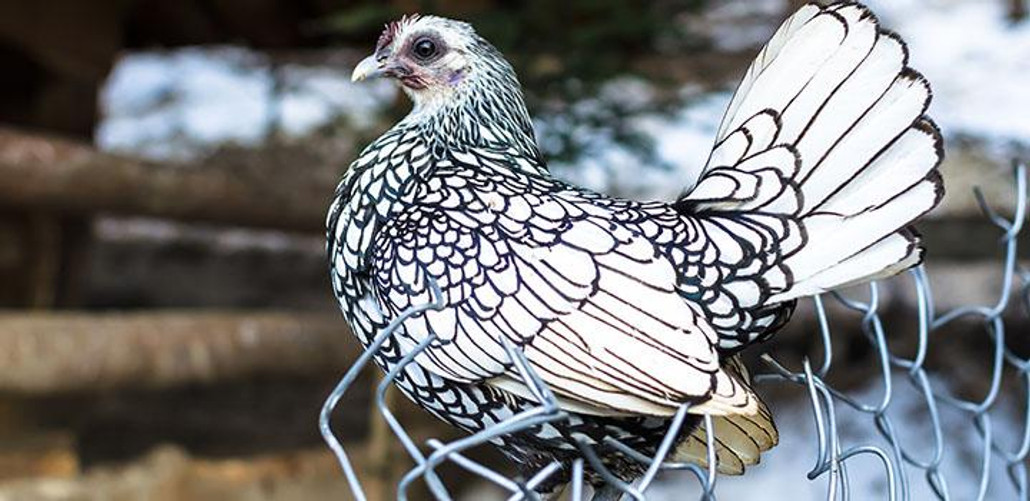
How to Raise Chickens & Bantams
Posted by Grange Co-op on 19th Feb 2020
It's fairly easy to raise chickens and bantams if you follow a few simple steps.
Chickens and bantams must be kept dry and warm, as they are very fragile when they are young. Keep their litter clean and dry. NEVER brood chicks or bantams on cedar shavings or on slippery surfaces. Pine shavings or rice hulls make good bedding for chicks. You can also raise them on wire mesh.
Chicks and bantams require a brooder temperature of approximately 95 degrees for the first week, dropping approximately 5 degrees per week until the end of the brooding period. Watch them closely to see if they are comfortable. If they cluster under the lamp, they are too cold; if they stay far away, drop their wings and pant, they are too hot; and if they range all over the brooder, they are comfortable. Always make sure they have room to get away from the heat source. Chicks and bantams are usually fairly quiet when they are happy, lots of peeping means they are either too cold, too hot or ill. Chicks and bantams can go outside when they are fully feathered. You may want to still give them heat at night if the weather is chilly.
Feed chicks and bantams a 21% protein starter feed for the first 6-8 weeks. Grange Co-op offers "medicated" Rogue Starter Broiler, "unmedicated" Rogue All-In-One or Rogue Nature's Harmony Organic Chick Starter 21%. Meat birds can be fed Rogue Organic Poultry Feed from start to finish.
After the first couple of weeks, you can sprinkle a little chick grit on their feed. You can also give them finely cracked corn mixed with their feed to help prevent pasting. Grange Co-op offers Rogue Chick Scratch or Rogue Nature’s Harmony Certified Organic Hen Scratch. Do not feed layer pellets until approximately one month before your hens are ready to lay, Grange Co-op offers Rogue Egg Layer Pellets and multiple organic options: Rogue Nature's Harmony Organic Layer Feeds. Make sure they have free choice oyster shell and hen grit available.
Never give chicks or bantams cold water, or they may become chilled and die. Use only lukewarm water. Change their water daily, or more often if it gets dirty. Use a no-drown waterer with a small base, specially made for chicks and bantams. It is also a good idea to put a a vitamin and electrolyte powder in the water to give them a good start. You can also place shiny marbles in the water and feed to attract them.
When first placing chicks or bantams into a new brooder, be sure to dip the beak of each chick into the waterer and watch to see that it swallows. You can then dip their beak in the feed. This should help them find feed and water easily. Feed is best placed on a paper towel or shallow tray for the first few days, until the chicks or bantams find feed easily. You can then place the feed in chick/bantam feeders. To keep them from scratching in their feed and dirtying and wasting it, use a feeder with a special lid with holes for the chicks and bantams to eat from, or with a reel to keep them from getting into the feeder.
As your chicks or bantams grow and begin to feather out, they will sometimes begin to pick at each other. Using a red or blue heat lamp helps with this, as does giving them shiny objects (such as CDs, mirrors, etc. hung around the brooder) to peck at.
For more information on raising chicks and bantams, visit a Grange Co-op near you to speak with one of our Grange Experts.
